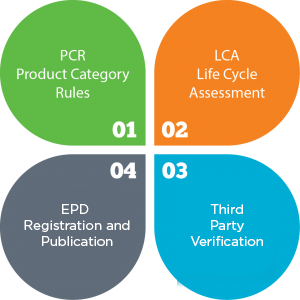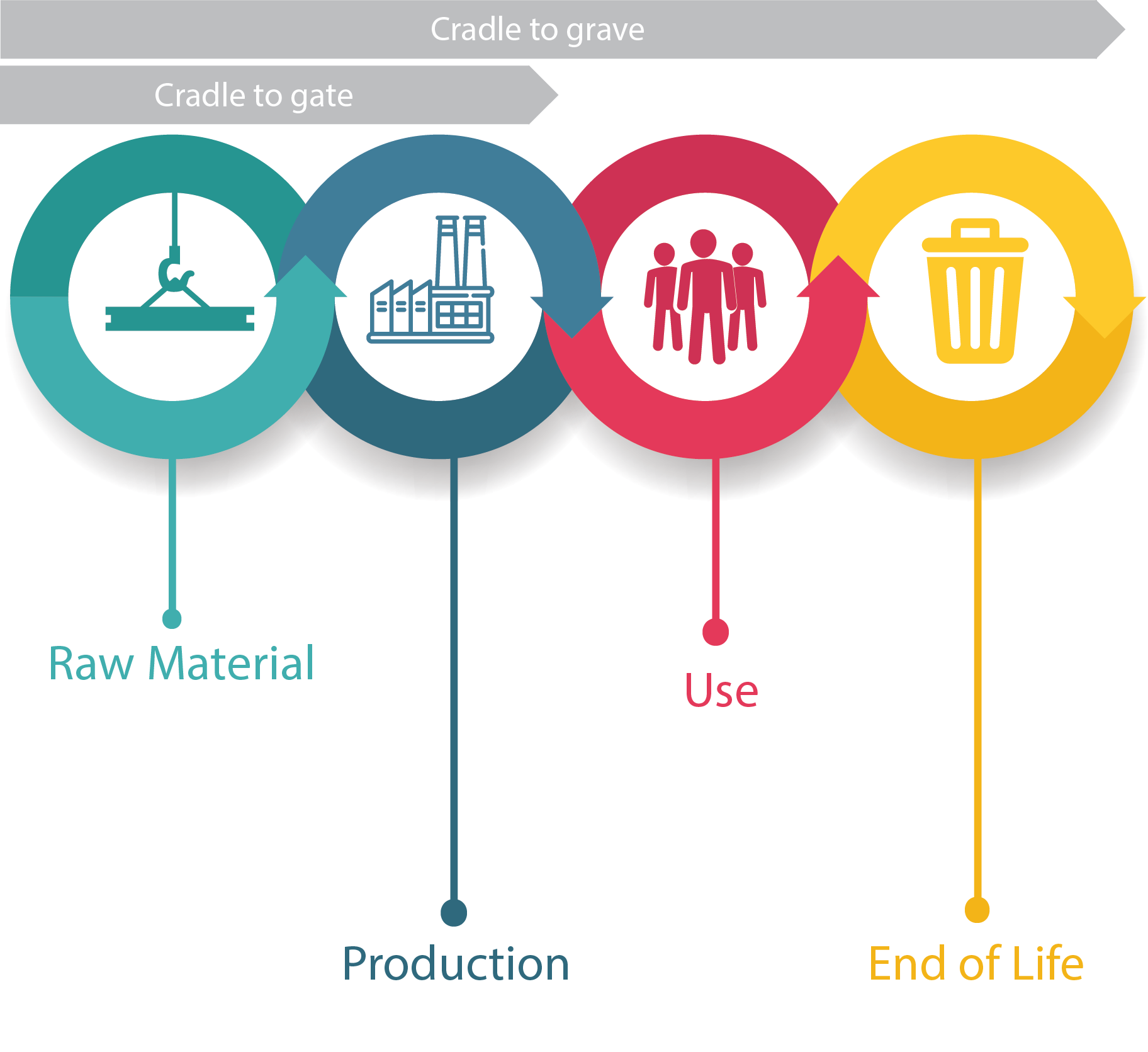- Environmental Product Declaration (EPD) certificates are declarations that quantitatively evaluate and declare the environmental performance of a product or service, as described in ISO 14025, on the basis of the principles of ISO 14040 Life Cycle Assessment (LCA) standards.
- EPDs are “Type III” category eco-labels as defined by ISO 14025.
- EPDs present the environmental impacts of a product from supply of raw materials to manufacturing and end of life stages, assessing parameters such as energy use, emissions and waste creation using various impact indicators.
- They are business-to-business oriented, and take into account the ecological footprint and various emission values of activities from cradle to grave life cycle stages by using LCA.
- Prepared independently with the information provided by manufacturers, and third party verified, EPDs consists of the technical description of products, details of the manufacturer and LCA results.
- EPDs present a product’s environmental information in a scientific format. By providing information widely to the public, they assist consumers, buyers and users of such products with their green purchasing and procurement activities. They also aim to motivate manufacturers to develop, produce and sell more eco-friendly products.

Why is it important?
- EN 15804-compliant EPD certificates, which are described in the sustainability criteria for buildings in Europe, were first requested by the European Directive on Construction Products in 2013. EPDs help fulfil the requirements related to sustainable use of resources in manufacturing in order to obtain the CE mark for construction products.
- In green building certification systems such as LEED, BREEAM and DGNB, EPD-certified construction products contribute extra points.
- Building-level EPD certificates help to certify quantitative environmental indicators such as carbon footprint or energy water consumption per square meter usage area.
- Manufacturers of construction products can demonstrate environmental awareness as a corporate responsibility by declaring the environmental impact of their activities.
- Thanks to the LCA studies that are the basis for EPD certification, a detailed scrutiny of the environmental impact resulting from the manufacturing processes and supply chain for construction products can be made, which allows new policies to be proposed.
- EPDs create a basis for eco-design approaches related to energy and resource efficiency.
How to obtain an EPD?
To obtain an EPD, manufacturers need to follow the stages below:
1.Check whether a Product Category Rule (PCR) is available in your product group
ISO 14025, the international standard governing EPDs, requires that certified EPDs must be based on a PCR document. PCRs are guidelines that define the product category, and describe the rules and scope of the LCA study and impact assessment categories to evaluate and present in a report. In Europe, EN 15804 serves as the mother PCR for all construction products, while ISO 21930 is its worldwide equivalent. International EPD System has one of the biggest libraries of PCRs in the world.
2.Conduct an LCA Study
Unless your company has in-house expertise, an LCA study is normally conducted by an independent third-party LCA/EPD Consultant. The outcome of the study will be an LCA Report. The LCA Report must include the functional unit, system boundary, datasets and impact assessment as requested by the PCR.
3.Prepare an EPD Document
The EPD document is based on the LCA Report and can be thought of as the summary of the LCA Report. It is also prepared based on the ISO 14025 standard, PCR and EPD Operator’s Guidelines (GPI). An EPD document includes the company introduction, product definition, description of the study scope, environmental impact results, and additional information about the EPD Operator, verifier and relevant references. These last three are aspects that define the reliability, transparency, and quality of the EPD of a product and service.
Life Cycle Assessment (LCA)
LCA is a scientific tool for the evaluation of environmental effects of products or services throughout the complete life cycle, “from cradle to grave”. This involves the extraction of raw materials, refining, fabrication, transportation, use, recycling and disposal of the product, as well as the energy and ancillary materials supplied. An LCA provides you with a chance to see how the products you produce are affecting the environment. Using the LCA you will map out a few different strategies that provide you with a quality product that will not have damaging impacts on the environment.
For green buildings and construction products, LCA is relevant to :
- Environmental Product Declaration (EPD)
- Environmental Building Declaration (EBD)
- LEED 4.0 material credits
- LEED 4.0 LCA credits
- ISO 14040/44 is the international standards for LCA
- ISO 14067 Climate Declarations

